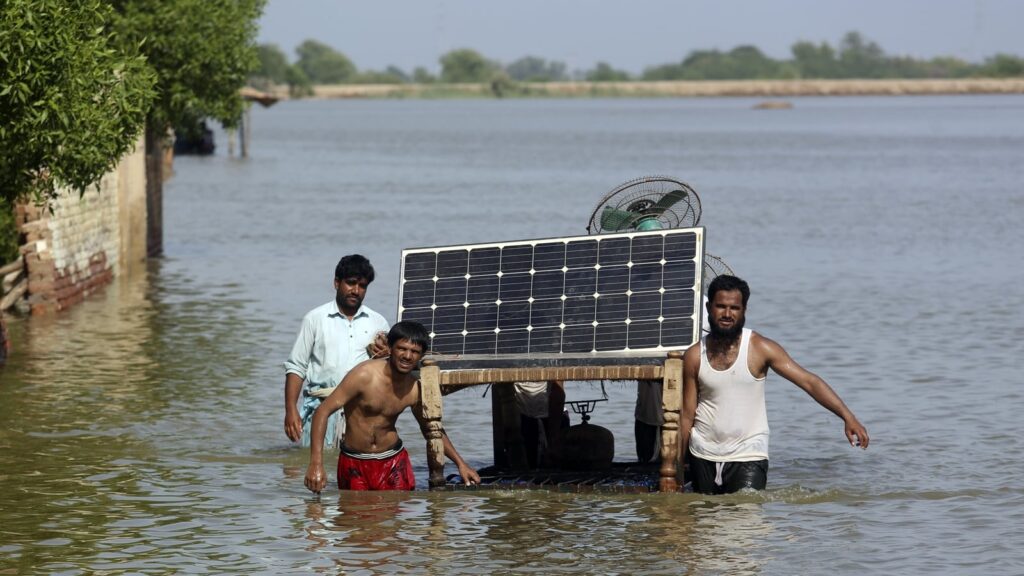Engineers violated Pakistani’s largest freshwater lake to drain water that threatened the cities nearby, said Monday officials, when heavy rains poured misery on millions of people affected by the worst floods in the country in history. Nearly one third of Pakistan is under water – an area of the size of the British – after months of monsoon rain record that has killed 1,300 people and washed the house, business, roads and bridges. Officials said the improvement bill would reach $ 10 billion for a country that already existed in the grip of the economic crisis, with hundreds of thousands of people who lost their homes when the rainy season began to approach the approach and winter.
“There is no place to take a shower or go to the bathroom,” said Zebunnisa Bibi, sheltering near Fazilpur, in Punjab Province, where 65 tents are now home for more than 500 people who fled from their villages that are flooded for the land higher. Similar tent camps have mushroomed in most southern and west of Pakistan, where rain has no place to flow because the river is already in full flow as a result of heavy rain in the north. Provincial Information Minister Sindh Sharjeel Inam Memon told AFP on Monday that the engineers had to cut the channel to Lake Manchar to drain water that threatened the cities of Sehwan and Bhan Saeedabad, with a combined population of nearly half a million.
– Lake Manchar is bigger than before – However, thousands must be evacuated from smaller settlements submerged by newly directed channels. Flood water is diverted but the threat is still far from finished,” said Memon. “We are trying our best to stop the inundation of more villages.” Lake Manchar, which is located west of the Indus River, varies according to the season and rainfall, but now it is spread throughout the area as anyone can remember. Most of the Sindh and Balochistan section have become a large water landscape, with local residents who were moved sadly on the raised paths, railroad tracks and other high land.
Human and animal waste in fetal water attracts a group of flies, while dengue outbreaks are reported from mosquito breeding in swamps. A pregnant woman in a camp in Punjab said she really needed medical attention for babies because every day now. The mother of five children knows it can be a difficult birth, because the baby has not shifted from the breech position. “I need a doctor or midwife. What if something happens to my child?” said Fahmidah Auntie.
The UN population fund said that on weekends there were at least 128,000 pregnant women in areas affected by floods that were in dire need of treatment-with 42,000 expected to give birth in the next three months. – Climate change is blamed – Pakistan receives heavy rain – often damaging – during the annual rainy season, which is very important for agriculture and water supply. But heavy rain that was so intense had not been seen for decades. Pakistani officials blame climate change, which increases the frequency and intensity of extreme weather throughout the world.
Pakistan is responsible for less than one percent of global greenhouse gas emissions, but eighth in the list compiled by Germanwatch NGOs from countries that are considered the most vulnerable to extreme weather caused by climate change. The large aid operation led by the Army was running smoothly, but the leaders of the country admitted that they were overwhelmed by the crisis scale and requested international assistance. The latest numbers from the National Disaster Management Authority show nearly 6,000 kilometers (4,000 miles) the road has been swept away, 246 bridges were destroyed, and 1.6 million houses were destroyed or badly damaged since June, when the rainy season began.

